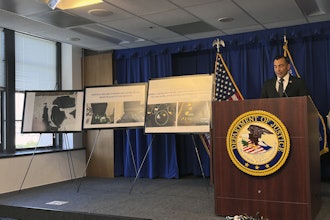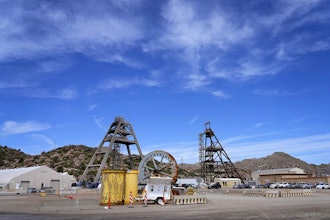
The Clean Energy Manufacturing Analysis Center’s (CEMAC) first annual Research Highlights report, a compilation of exciting findings from its set of studies released in 2015, offers fresh insights on key challenges and opportunities in the rapidly growing global market for clean energy technologies.
The report focuses on vital end products such as solar photovoltaic modules, wind turbines, and automotive lithium-ion batteries, along with carbon fiber, a key material for manufacturing clean energy technologies. This manufacturing analysis represents some of the most comprehensive global trade and supply chain work in these clean energy technology areas to date.
With investments in clean energy technologies topping $300 billion annually, this report provides crucial information on where these technologies are being manufactured and where opportunities may exist for market disruption or new entrants.
I encourage you to learn more about the report and the insights CEMAC is delivering to help policymakers, industry, and investors better understand the global market for clean energy technologies by registering for CEMAC’s April 5 webinar.
During this session, “Opportunity in the Clean Energy Market Space: Insights from Manufacturing Analysis,” participants will have the opportunity to pose questions to analysts from CEMAC and our world-class national labs.
As the world continues to demand cleaner and more efficient energy solutions, the economic opportunity presented by global clean energy markets is tremendous. As costs continue to rapidly decline, the market will invariably head into the trillions of dollars per year territory in the decades ahead.
Meanwhile at home, American manufacturing has taken it in the teeth over the past few decades. Could growing adoption of clean energy technologies not only increase America’s national, economic, and environmental security, but also present a once-in-a-generation opportunity for us to regain our manufacturing might? Yes!
Manufacturing still matters. Competitively manufacturing advanced and innovative clean energy technologies here in America will strengthen our economy, enhance our energy security, and improve our ability to further innovate. Manufacturing still accounts for 12.3% of U.S. GDP. It is a critical source of American economic productivity and competitiveness.
The manufacturing sector also has an outsized employment multiplier effect. Each manufacturing job supports an additional 1.6 jobs and each advanced manufacturing job supports as many as 4.9 additional jobs. Perhaps most importantly, manufacturing also helps build and sustain our industrial commons - the complex interconnected ecosystem of manufacturers, suppliers, universities, technical colleges, and others institutions that sustains America’s global leadership position in innovation.
To seize upon this historic opportunity, I helped launch the Energy Department’s Clean Energy Manufacturing Initiative (CEMI) three years ago to strengthen U.S. competitiveness in the production of clean energy products. We achieve this by investing in key technologies and new public-private partnerships that leverage American competitive advantages and overcome our competitive disadvantages. But you can’t manage what you can’t measure.
That’s why we created the Clean Energy Manufacturing Analysis Center (CEMAC) - to establish a first-of-a-kind, best-in-class analytical and benchmarking capability within the Energy Department to allow us to clearly understand and definitively benchmark America’s position in the global clean energy manufacturing race.
CEMAC’s first studies of select clean energy technologies, released in 2015, have revealed useful insights and equally important gaps that demand further evaluation. For example, global demand for carbon fiber is expected to continue to grow as the demand for lighter weight vehicles and longer, lighter wind turbine blades also grows.
The United States was the market leader in carbon fiber manufacturing in 2014 with $1.1 billion in exports. But CEMAC’s analysis shows that other regions could gain a competitive edge in the global market, and low costs and consistent quality will be important factors in maintaining the United States’ carbon fiber manufacturing competitiveness.
CEMAC’s 2015 Research Highlights report will help inform our understanding of the evolving global market for clean energy technologies. We expect to expand CEMAC’s work across the entire clean energy industry in the years ahead.
The impact is already being felt in the growing number of major companies, news outlets, and thought leaders who have used our analysis. I look forward to watching CEMAC grow in stature and impact in the years to come.
David Danielson is the Assistant Secretary for Energy Efficiency and Renewable Energy. This article first appeared on Energy.gov.























